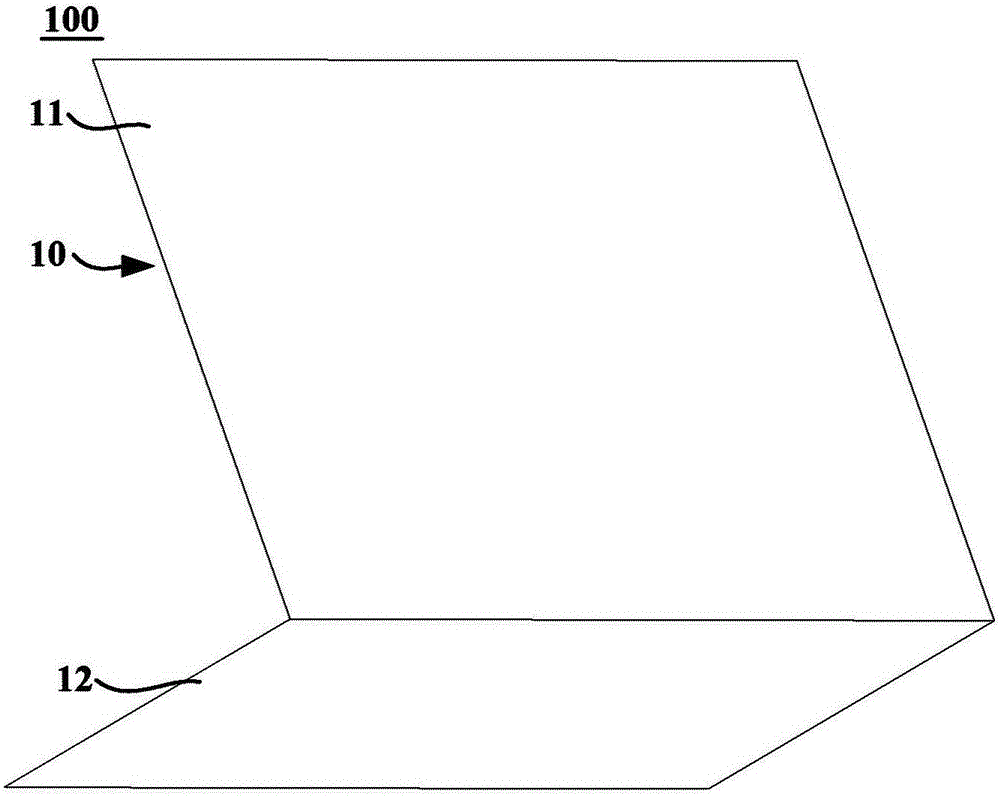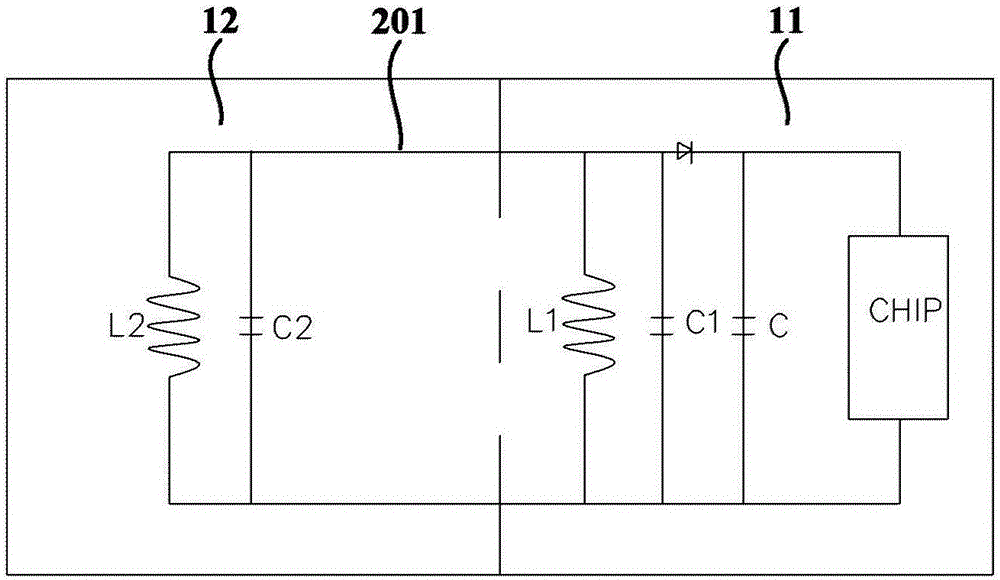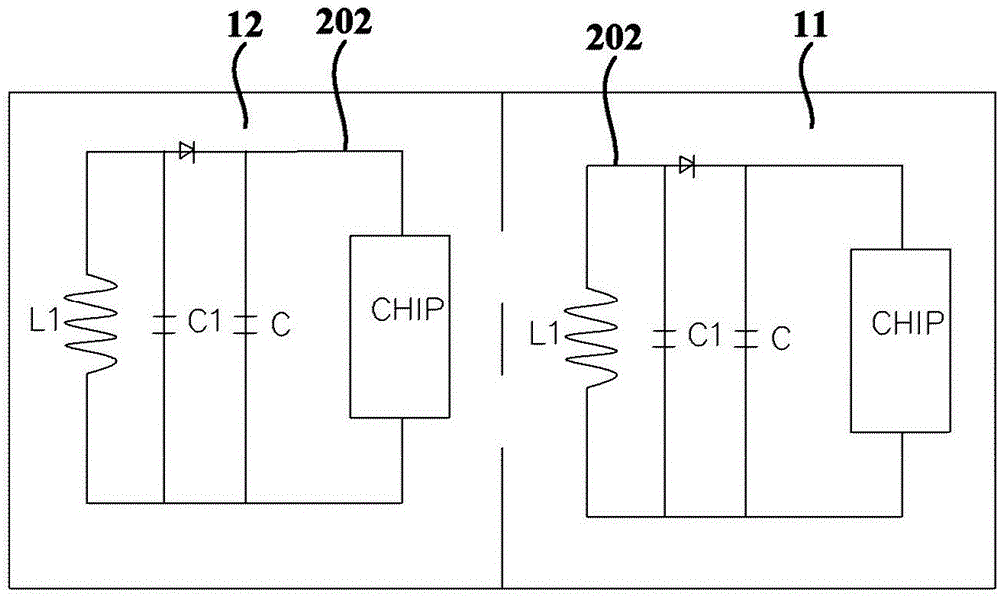RFID tag device
An RFID tag and loop technology, applied in the field of radio frequency identification, can solve the problems of mutual shielding, the reader cannot identify the tag, and the loop signal cannot be generated, so as to solve the identification problem, avoid the signal blind area, and improve the reading efficiency.
- Summary
- Abstract
- Description
- Claims
- Application Information
AI Technical Summary
Problems solved by technology
Method used
Image
Examples
Embodiment Construction
[0032] In the embodiment of the present invention, the RFID tag device may generally include a structural member and at least one RFID tag loop disposed on the structural member. As those skilled in the art can realize, the RFID tag circuit usually includes an IC chip and an oscillation circuit composed of an antenna coil and a capacitor. The antenna coil is used to receive the signal sent by the reader and transmit the required data back to the reader.
[0033] In particular, the structural member has at least two working surfaces forming an acute or obtuse angle with each other, and the aforementioned at least one RFID tag loop includes at least two antenna coils, and each antenna coil is arranged on one working surface. That is to say, the structural member has more than two working surfaces, and any two working surfaces are neither parallel nor perpendicular, and an antenna coil is arranged on each working surface. In the present invention, an RFID tag device is composed ...
PUM
 Login to View More
Login to View More Abstract
Description
Claims
Application Information
 Login to View More
Login to View More - R&D
- Intellectual Property
- Life Sciences
- Materials
- Tech Scout
- Unparalleled Data Quality
- Higher Quality Content
- 60% Fewer Hallucinations
Browse by: Latest US Patents, China's latest patents, Technical Efficacy Thesaurus, Application Domain, Technology Topic, Popular Technical Reports.
© 2025 PatSnap. All rights reserved.Legal|Privacy policy|Modern Slavery Act Transparency Statement|Sitemap|About US| Contact US: help@patsnap.com



